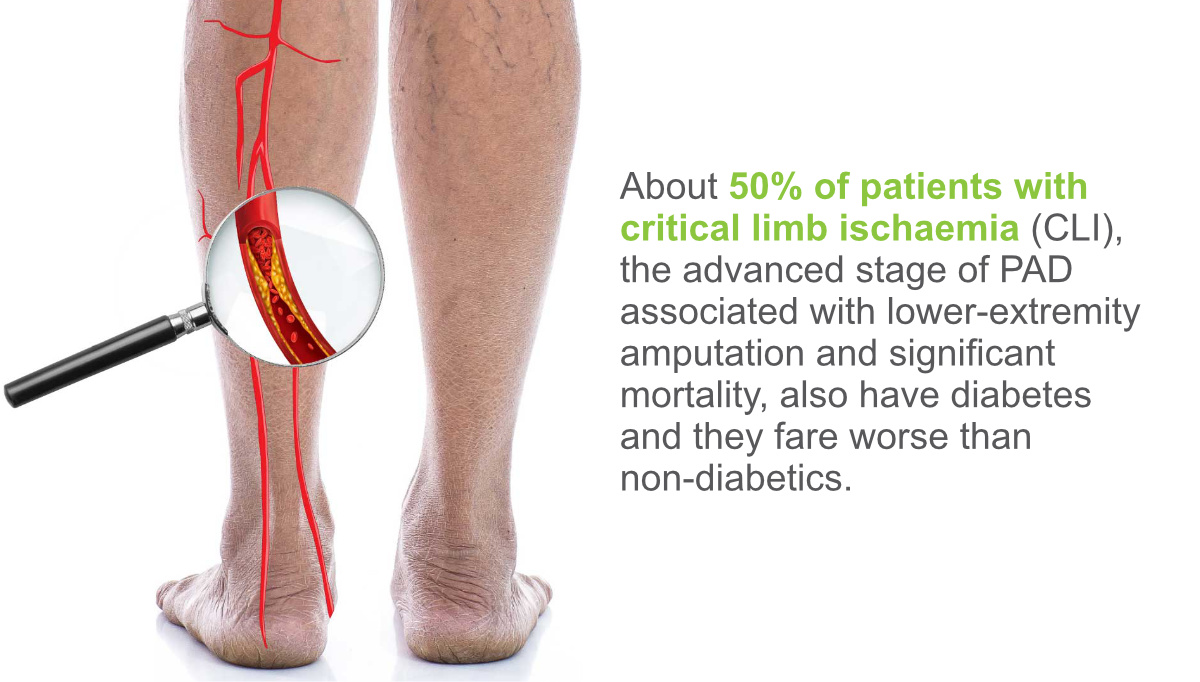Source: Thailand Medical News Nov 30, 2019 6 years, 5 days, 1 hour, 43 minutes ago
Pain in the legs while walking or doing other activities could be a sign of
peripheral artery disease, an expert says.
Typically,
peripheral artery disease (
PAD) develops silently, narrowing blood vessels until a shortfall in the supply of nutrients and oxygen causes cramps and leg pain, explained Dr. Faisal Aziz, chief of vascular surgery at Penn State Health Milton S. Hershey Medical Center.

Dr. Faisal Aziz told
Thailand Medical News, "Pain with physical exertion is a classic, hallmark sign. When it gets really bad, it can form wounds on the legs that do not heal or cause blackening of the foot or toes."
Main risk factors for
peripheral artery disease include age and gender. Men and all people 55 and older are most likely to develop the condition. Other risk factors include smoking, high blood pressure, high cholesterol, uncontrolled diabetes and heart disease.
Individuals who has risk factors and pain in their legs should talk to their doctor, Aziz advised.
He added,"If you aren't exercising or walking enough, you won't even know you have it until it has silently progressed. Most physicians will also recommend that you walk more to help the condition because that encourages your body to form other vessels around the blockage."
Drugs and medications that treat risk factors such as high blood pressure, cholesterol and insulin levels may be helpful, but peripheral artery disease can't be reversed after it starts.
Dr Aziz added "Whatever blockages have occurred will not go away unless they are stented or bypassed. But risk-factor modification can slow the progression of the disease."
In situations where walking doesn't improve the condition, 70% to 80% of patients can be helped with minimally invasive procedures in which balloons or stents are placed in blood vessels to improve circulation. More serious cases may require surgical bypass, where blood is rerouted from the damaged vessel to a good one nearby, Aziz said.
More About Peripheral Artery Disease (PAD)
PAD is similar to coronary artery disease (CAD)
Peripheral artery disease is a narrowing of the peripheral arteries serving the legs, stomach, arms and head. (“Peripheral” in this case means away from the heart, in the outer regions of the body.)
PAD most commonly affects arteries in the
legs.
Both
PAD and coronary artery disease (CAD) are caused by atherosclerosis. Atherosclerosis narrows and blocks arteries in critical regions of the body.
Quick facts about Peripheral Artery Disease
The most common symptoms of PAD involving the lower extremities are cramping, pain or tiredness in the leg or hip muscles while walking or climbing stairs. Typically, this pain goes away with rest and returns when you walk again.
Be aware that:
- Many people mistake the symptoms of PAD for something else.
- PAD often goes undiagnosed by healthcare professionals.
- People with peripheral arterial disease have a higher risk of coronary artery disease, heart attack or stroke.
- Left untreated, PAD can lead to gangrene and amputation.
Added risks for Peripheral Artery Disease
Other factors can increase your chances for peripheral artery disease, including:
- Your risk for peripheral artery disease increases with age.
- High blood pressure or high cholesterol puts you at risk for PAD.
- If you smoke, you have an especially high risk for PAD.
- If you have diabetes, you have an especially high risk for PAD.
The good news
If you’re at risk for peripheral artery disease or have been diagnosed with
Peripheral Artery Disease, it’s worth knowing that:
- PAD is easily diagnosed in a simple, painless way.
- You can take control: Follow your doctor’s recommendations and strive to lead a heart-healthy lifestyle.
- Some cases of PAD can be managed with lifestyle changes and medication.
Atherosclerosis and PAD
If you have atherosclerosis, that means that plaque has built up inside your artery walls. Plaque is made up of deposits of fats, cholesterol and other substances. Atherosclerosis in the peripheral arteries is the most common cause of
Peripheral Artery Disease.
What happens is this: First, plaque builds up enough to narrow an artery, which chokes off blood flow. Next, if that plaque becomes brittle or inflamed, it may rupture, triggering a blood clot to form. A clot can further narrow the artery, or completely block it.
If that blockage remains in the peripheral arteries of the legs, it can cause pain, changes in skin color, difficulty walking and sores or ulcers. Total loss of circulation to the legs and feet can cause gangrene and the loss of a limb.
If the blockage occurs in a carotid artery, it can cause a stroke.
The best way to try to prevent Peripheral Artery Disease is to maintain a healthy, active lifestyle:
- If you are a smoker, quit smoking.
- Work to control your blood pressure, cholesterol, and glucose levels.
- Exercise regularly. ...
- Follow a low-fat, low-cholesterol diet and eat more fruits and vegetables.
It’s important to learn the facts about PAD. As with any disease, the more you understand, the more you’ll be able to help your doctor make an early diagnosis.
Peripheral Artery Disease has common symptoms, but many people with PAD never have any symptoms at all.
When in doubt, never procrastinate and never attempt to selftreat, make an appointment to see a doctor immediately to get the proper required treatment fast before more damage in your body occurs.
